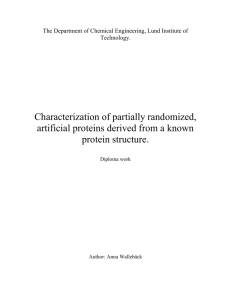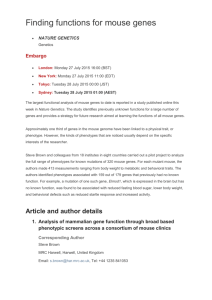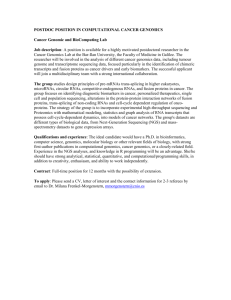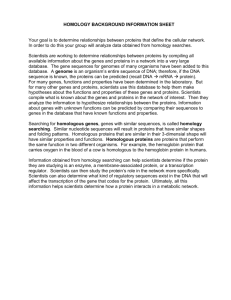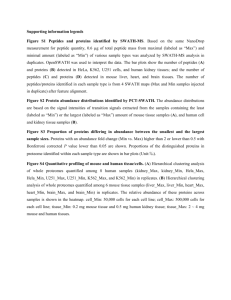High Throughput Approaches Applied to the
advertisement
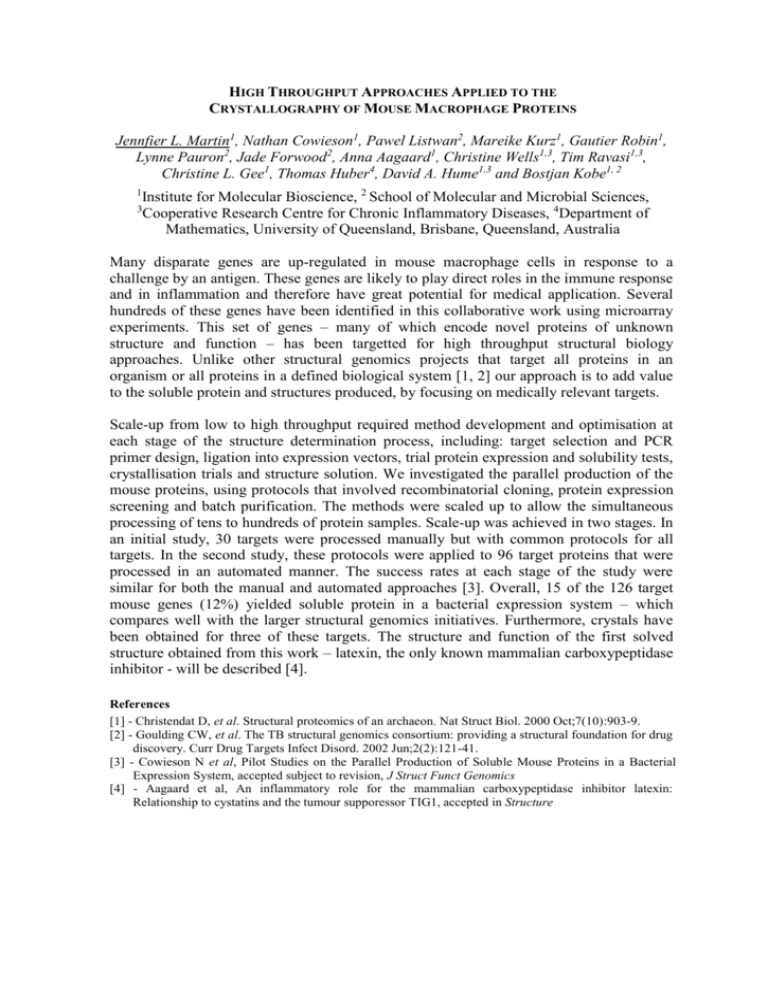
HIGH THROUGHPUT APPROACHES APPLIED TO THE CRYSTALLOGRAPHY OF MOUSE MACROPHAGE PROTEINS Jennfier L. Martin1, Nathan Cowieson1, Pawel Listwan2, Mareike Kurz1, Gautier Robin1, Lynne Pauron2, Jade Forwood2, Anna Aagaard1, Christine Wells1,3, Tim Ravasi1,3, Christine L. Gee1, Thomas Huber4, David A. Hume1,3 and Bostjan Kobe1, 2 1 Institute for Molecular Bioscience, 2 School of Molecular and Microbial Sciences, Cooperative Research Centre for Chronic Inflammatory Diseases, 4Department of Mathematics, University of Queensland, Brisbane, Queensland, Australia 3 Many disparate genes are up-regulated in mouse macrophage cells in response to a challenge by an antigen. These genes are likely to play direct roles in the immune response and in inflammation and therefore have great potential for medical application. Several hundreds of these genes have been identified in this collaborative work using microarray experiments. This set of genes – many of which encode novel proteins of unknown structure and function – has been targetted for high throughput structural biology approaches. Unlike other structural genomics projects that target all proteins in an organism or all proteins in a defined biological system [1, 2] our approach is to add value to the soluble protein and structures produced, by focusing on medically relevant targets. Scale-up from low to high throughput required method development and optimisation at each stage of the structure determination process, including: target selection and PCR primer design, ligation into expression vectors, trial protein expression and solubility tests, crystallisation trials and structure solution. We investigated the parallel production of the mouse proteins, using protocols that involved recombinatorial cloning, protein expression screening and batch purification. The methods were scaled up to allow the simultaneous processing of tens to hundreds of protein samples. Scale-up was achieved in two stages. In an initial study, 30 targets were processed manually but with common protocols for all targets. In the second study, these protocols were applied to 96 target proteins that were processed in an automated manner. The success rates at each stage of the study were similar for both the manual and automated approaches [3]. Overall, 15 of the 126 target mouse genes (12%) yielded soluble protein in a bacterial expression system – which compares well with the larger structural genomics initiatives. Furthermore, crystals have been obtained for three of these targets. The structure and function of the first solved structure obtained from this work – latexin, the only known mammalian carboxypeptidase inhibitor - will be described [4]. References [1] - Christendat D, et al. Structural proteomics of an archaeon. Nat Struct Biol. 2000 Oct;7(10):903-9. [2] - Goulding CW, et al. The TB structural genomics consortium: providing a structural foundation for drug discovery. Curr Drug Targets Infect Disord. 2002 Jun;2(2):121-41. [3] - Cowieson N et al, Pilot Studies on the Parallel Production of Soluble Mouse Proteins in a Bacterial Expression System, accepted subject to revision, J Struct Funct Genomics [4] - Aagaard et al, An inflammatory role for the mammalian carboxypeptidase inhibitor latexin: Relationship to cystatins and the tumour supporessor TIG1, accepted in Structure

